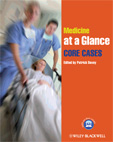Dermatology
Case 1: A Patient with An Itchy Skin Eruption
CASE
A 53‐year‐old married office worker was seen in A&E with a 6‐day history of a worsening itchy skin eruption. He had had upper respiratory symptoms for 3 days prior to that for which he had been give a 5‐day course of Augmentin by his GP. He still felt vaguely unwell and had become shivery over 3 days. There was a past history of psoriasis (12 years, affecting only his elbows and knees) and hypertension (4 years). For the former he had used a potent topical steroid and for the latter had been on a diuretic for 3 years to which had been added another drug 3 weeks earlier. He only drank at weekends (three or four pints of beer). He had smoked 20 cigarettes a day from age 15 to age 49. There was a family history of psoriasis (mother and aunt) and cardiovascular disease, including hyperlipidaemia, hypertension and myocardial infarction (father and older brother, both smokers). Recently his daughter aged 17 who lived at home had been treated for scabies but his wife was not itching. On examination his temperature was 37.6°C and his pulse was 100 beats/min and regular. There was a widespread erythematous eruption affecting 90% of the body surface including the palms and soles. There were evident psoriatic plaques on the elbows and knees. There was a dusky erythema and diffuse scale involving the scalp. Elsewhere there were areas of more superficial scale and clusters of pustules on the limbs and torso and a few excoriations: around the upper cheek and neck blistering and exfoliation were thought to be present. The nails showed psoriasiform onycholysis and two splinter haemorrhages were seen in one index finger nail. The mucosae were normal. There was pitting oedema of both ankles. Examination of the cardiovascular, respiratory and neurological systems was normal as was examination of the abdomen. Urinalysis was normal. Routine bloods showed a normal haemoglobin, a slightly elevated white cell count, an ESR of 30 mm/hour, a CRP of 37 mg/L, normal urea and electrolytes, normal calcium and phosphate, slightly elevated random glucose, normal liver function tests. The ECG and chest X‐ray were normal.
QUESTION
Your score this session: 0 of 0
The most important next step to take is:





